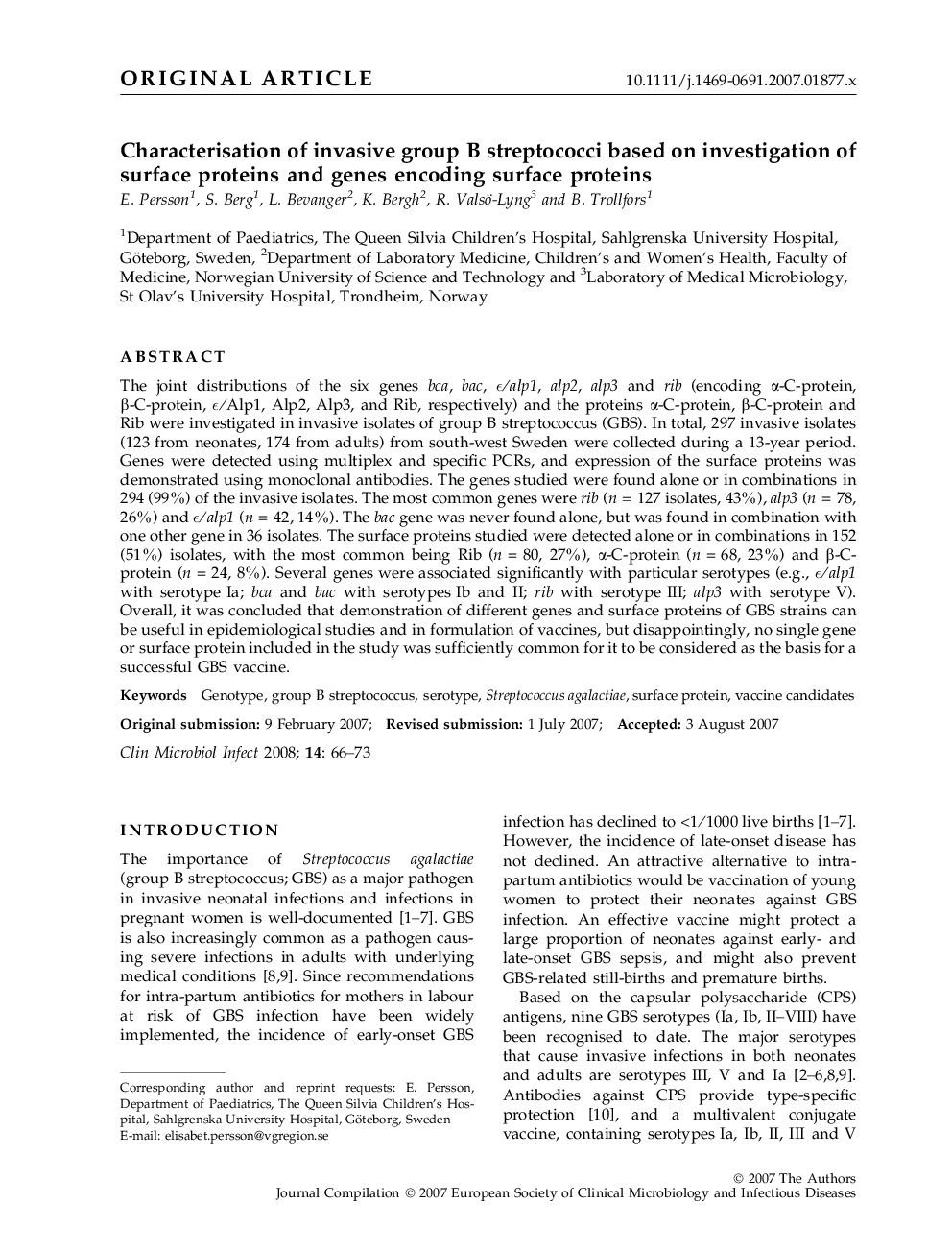| Article ID | Journal | Published Year | Pages | File Type |
|---|---|---|---|---|
| 6131329 | Clinical Microbiology and Infection | 2008 | 8 Pages |
Abstract
The joint distributions of the six genes bca, bac, É/alp1, alp2, alp3 and rib (encoding α-C-protein, β-C-protein, É/Alp1, Alp2, Alp3, and Rib, respectively) and the proteins α-C-protein, β-C-protein and Rib were investigated in invasive isolates of group B streptococcus (GBS). In total, 297 invasive isolates (123 from neonates, 174 from adults) from south-west Sweden were collected during a 13-year period. Genes were detected using multiplex and specific PCRs, and expression of the surface proteins was demonstrated using monoclonal antibodies. The genes studied were found alone or in combinations in 294 (99%) of the invasive isolates. The most common genes were rib (n = 127 isolates, 43%), alp3 (n = 78, 26%) and É/alp1 (n = 42, 14%). The bac gene was never found alone, but was found in combination with one other gene in 36 isolates. The surface proteins studied were detected alone or in combinations in 152 (51%) isolates, with the most common being Rib (n = 80, 27%), α-C-protein (n = 68, 23%) and β-C-protein (n = 24, 8%). Several genes were associated significantly with particular serotypes (e.g., É/alp1 with serotype Ia; bca and bac with serotypes Ib and II; rib with serotype III; alp3 with serotype V). Overall, it was concluded that demonstration of different genes and surface proteins of GBS strains can be useful in epidemiological studies and in formulation of vaccines, but disappointingly, no single gene or surface protein included in the study was sufficiently common for it to be considered as the basis for a successful GBS vaccine.
Keywords
Related Topics
Life Sciences
Immunology and Microbiology
Microbiology
Authors
E. Persson, S. Berg, L. Bevanger, K. Bergh, R. Valsö-Lyng, B. Trollfors,
